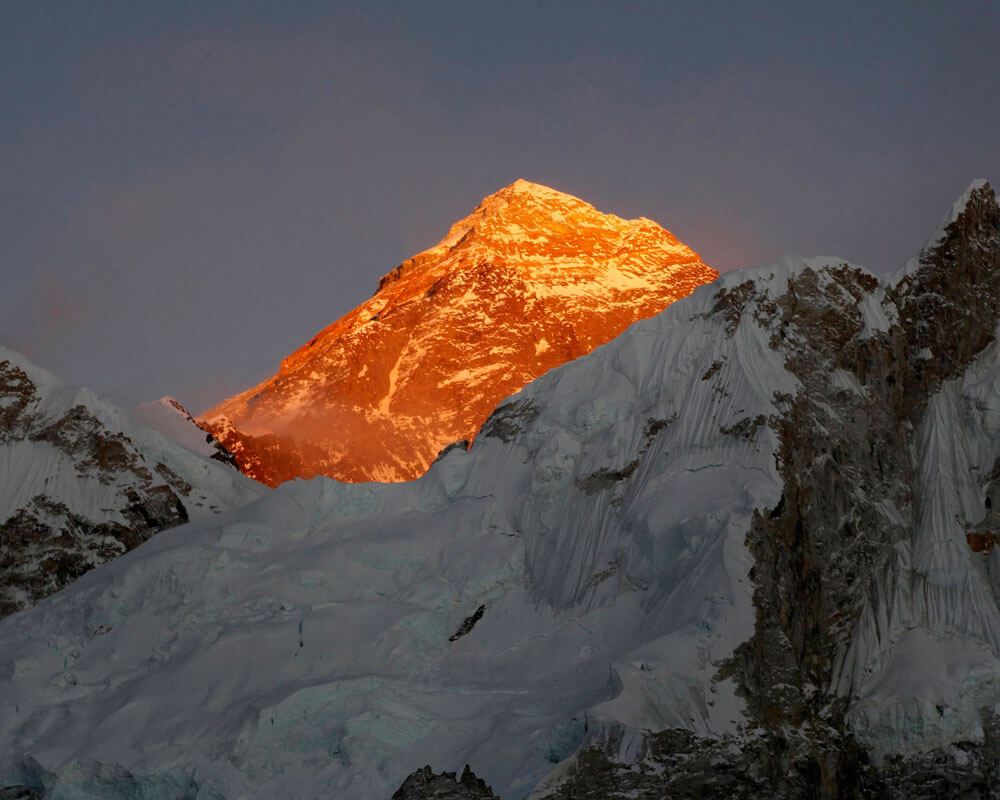Introduction
Are you dreaming of standing at the foot of the world’s highest mountain? The Everest Base Camp Trek is an adventure that beckons trekkers from around the globe. Known for its stunning landscapes and rich cultural experiences, this trek offers an unparalleled journey through the heart of the Himalayas.
History of Everest Base Camp Trek
The Everest Base Camp (EBC) Trek has its roots in the early 20th century when mountaineers first started exploring the region. The trek gained prominence after Sir Edmund Hillary and Tenzing Norgay’s historic ascent of Mount Everest in 1953. Over the years, it has evolved into one of the most iconic trekking routes, attracting thousands of adventurers annually.
Geographical Location
Everest Headquarters is situated in the Khumbu district of Nepal. Situated at an altitude of 5,364 meters (17,598 feet), it is the starting point for climbers aiming to summit Mount Everest. The trek to EBC passes through picturesque villages, dense forests, and rugged terrain, with notable landmarks such as Namche Bazaar, Tengboche Monastery, and the Khumbu Icefall.
Preparation for the Trek
Physical Fitness Requirements
Journeying to Everest Headquarters requests a decent degree of actual wellness. Regular cardio exercises, strength training, and endurance workouts are essential to prepare your body for the challenges ahead. Start training at least three to six months before your trek.
Essential Gear and Equipment
Packing the right gear is crucial. Essential items include a sturdy pair of trekking boots, thermal clothing, a down jacket, a quality sleeping bag, and a reliable backpack. Don’t forget trekking poles, a headlamp, and a first-aid kit.
Acclimatization Strategies
Acclimatization is key to preventing altitude sickness. Plan for rest days during your trek to allow your body to adjust to the increasing altitude. Stay hydrated, eat well, and avoid alcohol and smoking.
Best Time to Trek
The best time to embark on the Everest Base Camp Private Trek is during the pre-monsoon (March to May) and post-monsoon (September to November) seasons. These periods offer stable weather, clear skies, and breathtaking views of the Himalayas.
Trek Itinerary
Day-by-Day Breakdown
- Day 1: Arrival in Kathmandu
- Day 2: Fly to Lukla and trip to Phakding
- Day 3: Trek to Namche Bazaar
- Day 4: Acclimatization day in Namche Bazaar
- Day 5: Trek to Tengboche
- Day 6: Trek to Dingboche
- Day 7: Acclimatization day in Dingboche
- Day 8: Trek to Lobuche
- Day 9: Journey to Gorak Shep and visit Everest Headquarters
- Day 10: Climb to Kala Patthar and return to Pheriche
- Day 11: Trek to Namche Bazaar
- Day 12: Trek to Lukla
- Day 13: Fly back to Kathmandu
- Day 14: Departure from Kathmandu
Cultural Experience
Interaction with Sherpa Community
The Sherpa public is the substance of the Everest locale. Engaging with them provides insights into their unique way of life, rich traditions, and incredible mountaineering skills. Visiting local villages and tea houses offers a glimpse into their daily routines and hospitality.
Buddhist Monasteries and Traditions
The trek is dotted with ancient Buddhist monasteries, such as Tengboche Monastery, which is one of the most significant. These spiritual centres offer a peaceful retreat and a chance to witness traditional ceremonies and prayer rituals.
Flora and Fauna
The Everest region is home to diverse wildlife and plant species. Trekkers may encounter animals like the Himalayan Tahr, snow leopard (though rare), and various bird species including the colourful Danphe. The lush forests are filled with rhododendrons, magnolias, and blue pines, adding vibrant colours to the landscape.
Challenges of the Trek
Altitude Sickness
One of the biggest challenges is dealing with altitude sickness. Side effects incorporate cerebral pains, queasiness, tipsiness, and windedness. Acclimatization, hydration, and gradual ascent are crucial to managing these risks.
Physical Demands
The trek involves long hours of walking on rugged and uneven terrain. Strong legs, good cardiovascular health, and mental resilience are essential to tackle the daily demands of the trek.
Weather Challenges
Weather in the Himalayas can be unpredictable. Sudden changes can lead to extreme cold, high winds, and snowfall, making it essential to be well-prepared and flexible with your itinerary.
Safety Tips
Precautionary Measures
Always trek with a partner or group, inform someone about your route and expected return, and carry a map and a GPS device. Hiring a local guide can greatly enhance your safety and experience.
Emergency Protocols
Familiarize yourself with emergency procedures. Carry a fully charged phone with emergency contact numbers, a whistle, and a portable oxygen canister. Know the locations of health posts and rescue points along the route.
Environmental Impact
Sustainable Trekking Practices
Adopt eco-friendly practices like carrying reusable water bottles, avoiding single-use plastics, and following the Leave No Trace principles. Support local businesses and choose eco-conscious trekking companies.
Conservation Efforts
The region is part of the Sagarmatha National Park, a UNESCO World Heritage Site. Conservation efforts aim to protect the unique ecosystem and cultural heritage. Trekkers can contribute by respecting park rules and participating in clean-up initiatives.
Cost of the Trek
Budgeting for the Trek
The expense of travelling to Everest Headquarters can fluctuate generally. Key expenses include flights, permits, accommodation, food, gear, and guide/porter services. On average, expect to spend between $1,500 to $3,000.
Cost Breakdown
- Flights: $200 – $400 (Kathmandu to Lukla round trip)
- Permits: $50 – $70 (TIMS and Sagarmatha National Park Entry)
- Accommodation: $5 – $30 per night
- Food: $20 – $40 per day
- Guide/Porter: $20 – $30 per day
Travel Tips
Packing Advice
Pack light but include essentials like a high-quality down jacket, thermal layers, a reliable sleeping bag, and personal hygiene items—waterproof everything using dry bags or plastic liners.
Navigating Local Transportation
Flights to Lukla are subject to weather conditions, so be prepared for delays. In Kathmandu, taxis and rickshaws are the best way to get around. Ensure you agree on the fare beforehand or use a metered taxi.
Description:
Looking for an Private Everest Base camp trek? We offer Everest Base Camp Trek, Private and Group Trek -14 Days packages at reasonable cost. If you are in search of the best Everest Base Camp Trek, Private and Group Trek -14 Days Cost 2024 package then our Everest Base Camp Trekking 14 Days Itinerary is the right one for you.

